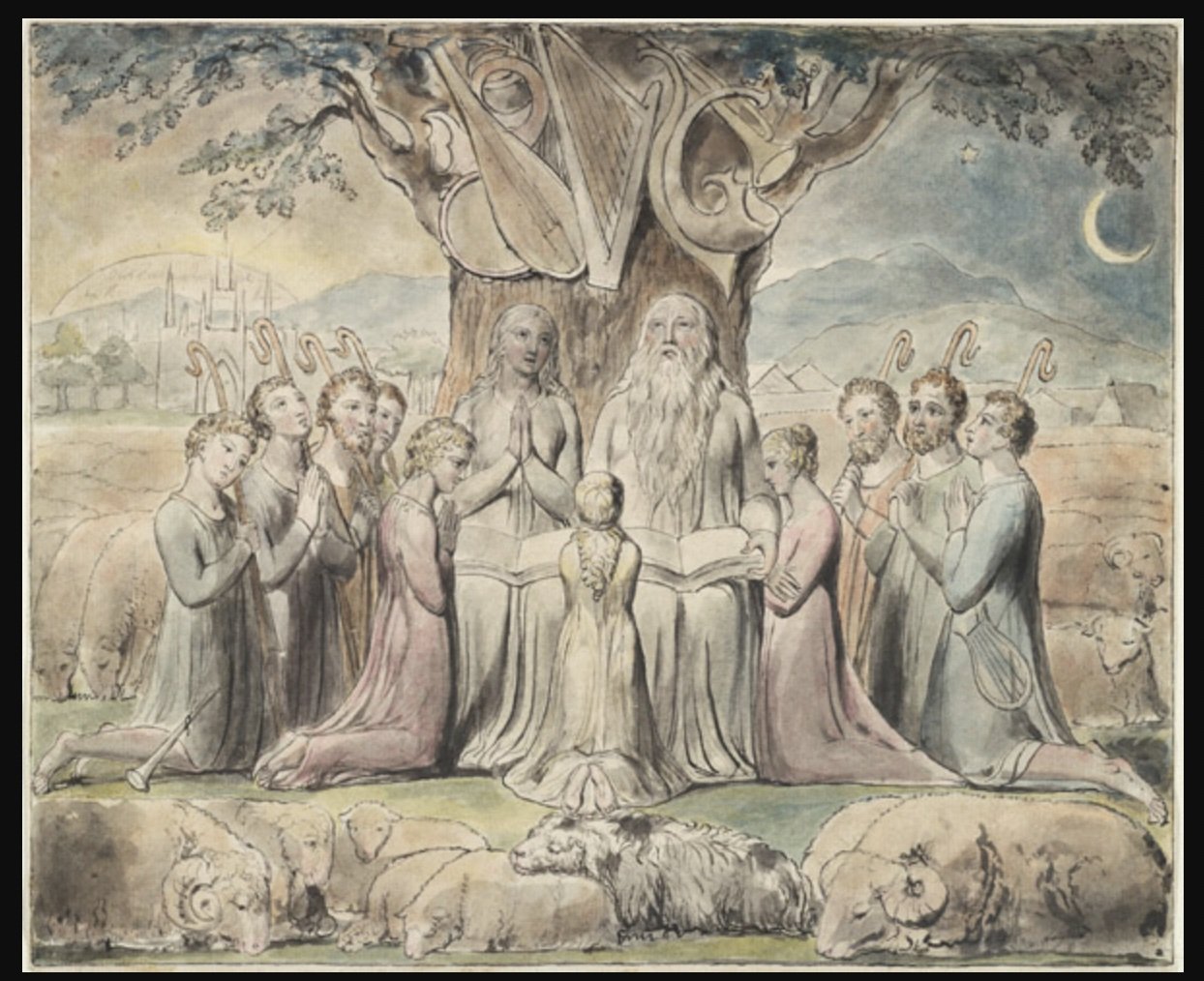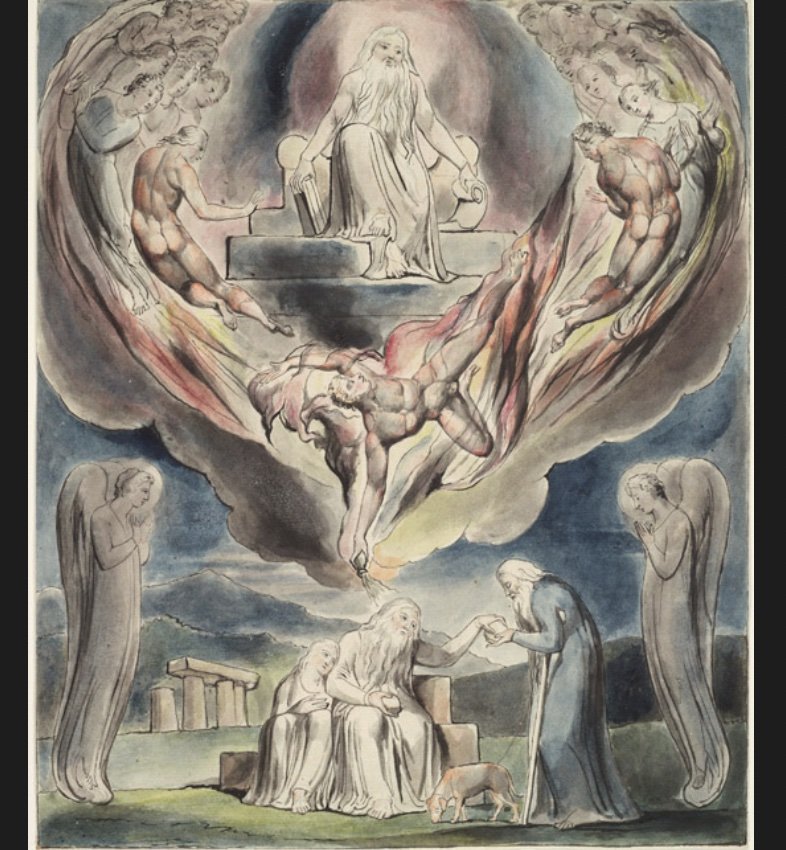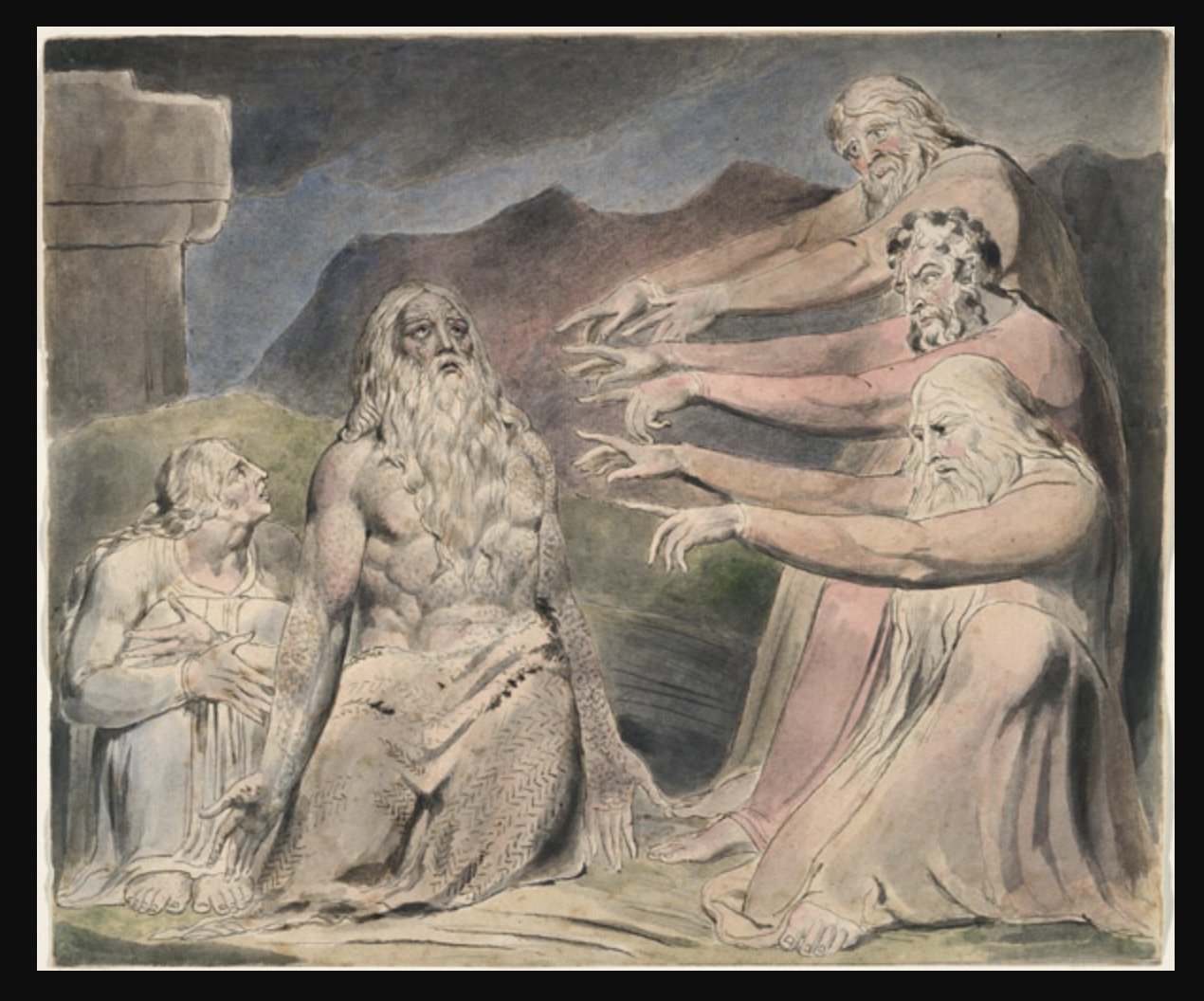Ralph Vaughan Williams, Job, Blake, et al
When one kind of art comes together with another to create a single piece of work, magic happens. These days, collaborations between poets and painters most frequently get my attention. But last weekend, at the 33rd Bard Music Festival dedicated to Ralph Vaughan Williams, a wonderful mix of music and visual images swept me away.
Job, Masque for Dancing (1927-30) was the piece played by The Orchestra Now, conducted by Leon Botstein. Ralph Vaughan Williams composed the music for what was intended to be a ballet — a ballet inspired by William Blake’s illustrations of episodes from the Biblical Book of Job. The ballet was conceived by Geoffrey Keynes with visual design by Gwendolen Raverat. At Bard, there was no ballet, no dancers. Instead, Williams’ music was accompanied by a video of Blake’s illustrations of Job projected onto a very, very large screen suspended above the musicians (Joshua Thorson did the video design and Emily Cut was the dramaturg). The video presented Blake’s watercolors essentially all in detail, very small sections of his works were shown to the audience.
I loved how the music drew me into an up close look at Blake’s work. The experience of listening to the music while looking at the images, both the images from Blake and the video that wove them together, was a wonderful illustration of how one kind of art practice enhances the audience’s appreciation of other kinds of art. In last Saturday’s performance, because of the music I was able to see things in the Blake that I had not seen before. Seeing Blake’s watercolor drawings above the musicians made the William’s music more powerful than it had been in the past when I only listened to it.
I cannot, in this single blog, create the powerful art collaboration that I saw and heard. I can only suggest some samples of Ralph Vaughan Williams Job score and give you links to Blake’s Job watercolors. Maybe your imaginations can bring some of them together.



